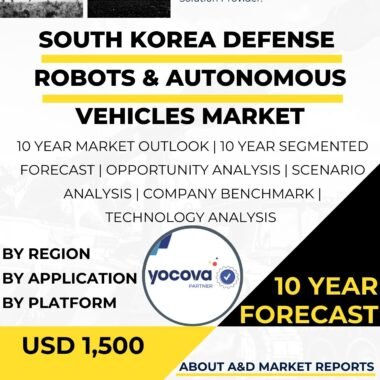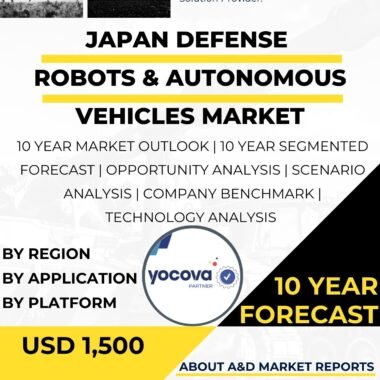Description
Australia Defense Robots & Autonomous Vehicles Market Overview
The Defense Robots & Autonomous Vehicles Market is expanding quickly. Robots and autonomous systems now support many military missions. They improve efficiency, reduce risks, and perform complex tasks with minimal human control. These technologies strengthen the Australian Defence Force (ADF) across surveillance, reconnaissance, logistics, intelligence, and hazardous operations.
Reconnaissance and Surveillance in the Australia Defense Robots & Autonomous Vehicles Market
Unmanned Systems Improving Battlefield Awareness
The ADF uses unmanned aerial vehicles (UAVs) and ground robots for surveillance missions. These systems carry advanced sensors and cameras. They deliver real-time images and intelligence that help troops understand threats and terrain conditions.
Access to Difficult and Dangerous Areas
Robots can reach areas that are unsafe for soldiers. They offer persistent monitoring, extended range, and improved safety. This boosts situational awareness and supports faster decision-making.
Logistics and Supply Chain Support
Autonomous Vehicles Enhancing Delivery Efficiency
The Australia Defense Robots & Autonomous Vehicles Market also plays a major role in defense logistics. Autonomous ground vehicles and drones move supplies, ammunition, and medical items. This reduces the physical strain on personnel.
Operation in Harsh Environments
These systems perform well in rough terrain and extreme weather. They ensure that vital resources reach frontline units without delay.
Intelligence Gathering and Data Processing
Autonomous systems collect large volumes of mission data. They process information from sensors, satellites, and communications networks. This ability helps the ADF extract accurate insights and supports quick, informed decisions during operations.
Handling Hazardous Operations Safely
Bomb Disposal and Explosive Threat Response
Bomb disposal robots protect personnel by neutralizing explosive devices from a safe distance. Their precision and reliability reduce the risk of casualties during hazardous tasks.
Underwater Threat Detection
Autonomous underwater vehicles (AUVs) support mine detection and underwater surveillance. They minimize risks for divers and improve maritime security.
Key Drivers of Market Growth
Modernization and Operational Efficiency
The Australia Defense Robots & Autonomous Vehicles Market continues to grow as the ADF upgrades its capabilities. Robots help reduce human casualties and optimize mission performance. Their flexibility makes them valuable across multiple defense domains.
Demand for Advanced Technologies
The rise of AI, machine learning, and high-performance sensors further accelerates market growth. These technologies enable smarter, more autonomous systems.
Research, Development, and Innovation
Collaboration between the defense industry and universities drives innovation. Joint research helps develop next-generation autonomous solutions. These include improved navigation systems, advanced AI models, and enhanced sensor technologies.
Government Support and Procurement Policies
Government investment and procurement strategies strongly influence the Australia Defense Robots & Autonomous Vehicles Market. Stable funding ensures continued development, testing, and deployment of advanced autonomous platforms.
Cybersecurity for Autonomous Defense Systems
As robots and autonomous vehicles connect to military networks, cybersecurity becomes essential. Strong protective measures safeguard communications and prevent tampering. This ensures mission integrity and operational reliability.
Conclusion
The Australia Defense Robots & Autonomous Vehicles Market is becoming a key part of the country’s defense strategy. These systems improve surveillance, logistics, intelligence gathering, and risk-heavy operations. With ongoing investment, research partnerships, and strong cybersecurity, Australia can maintain an advanced and resilient defense posture. Robots and autonomous vehicles will continue shaping modern warfare and helping the ADF respond effectively to evolving security threats.




